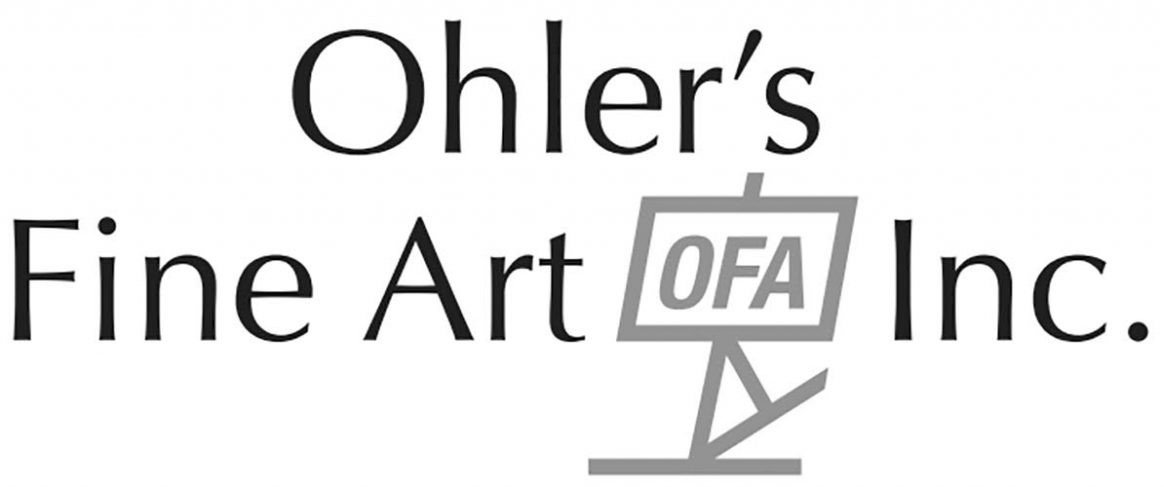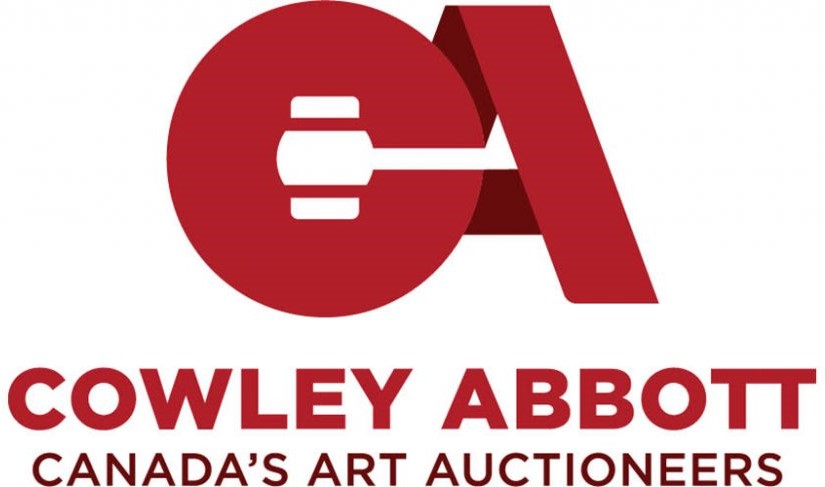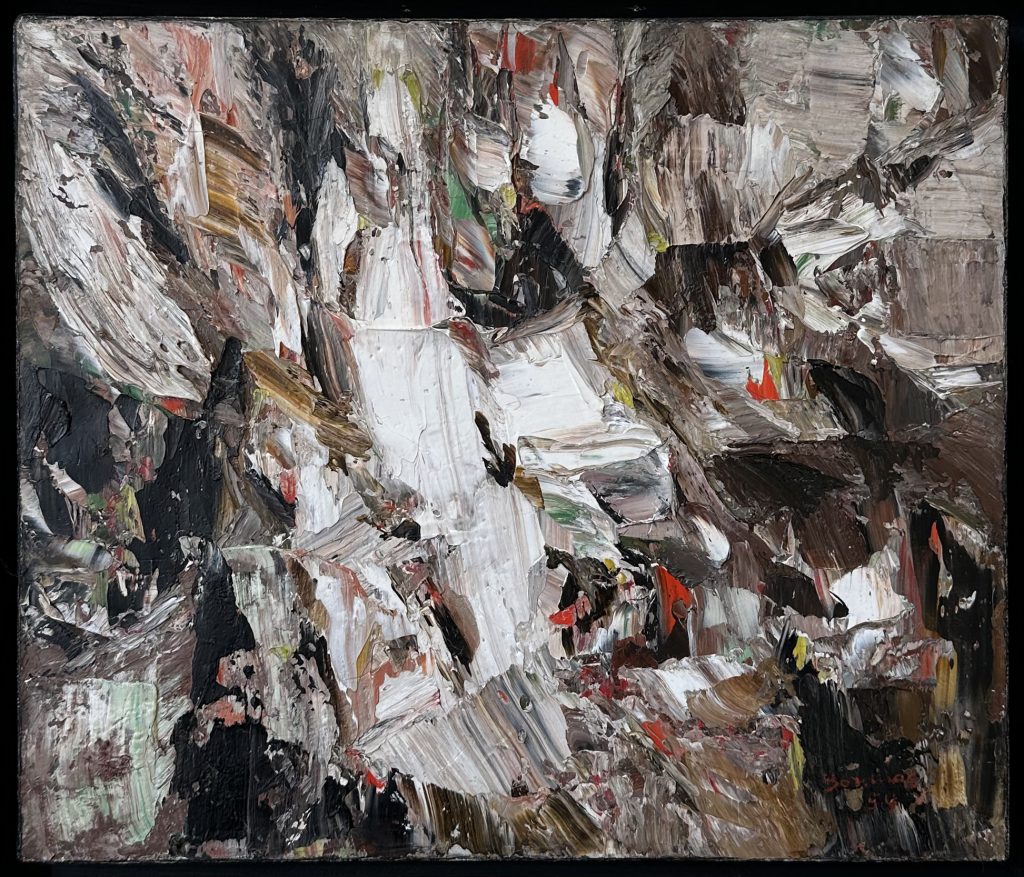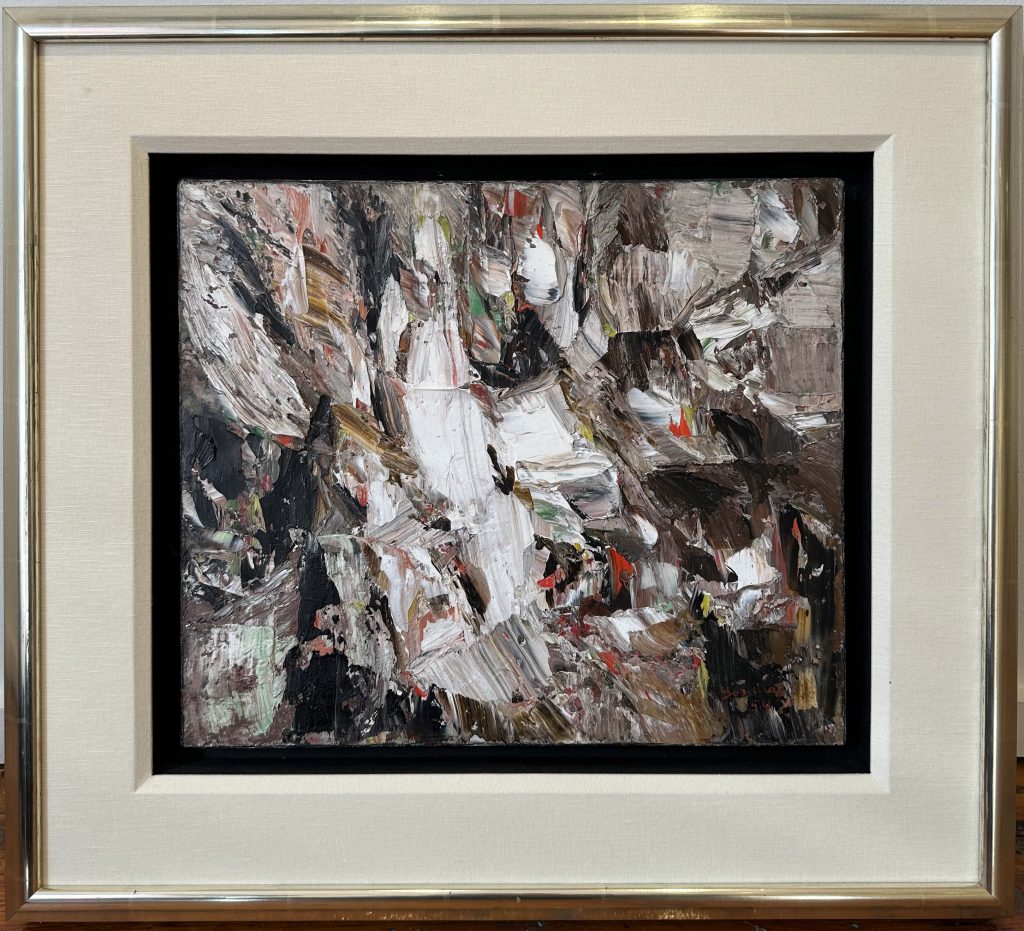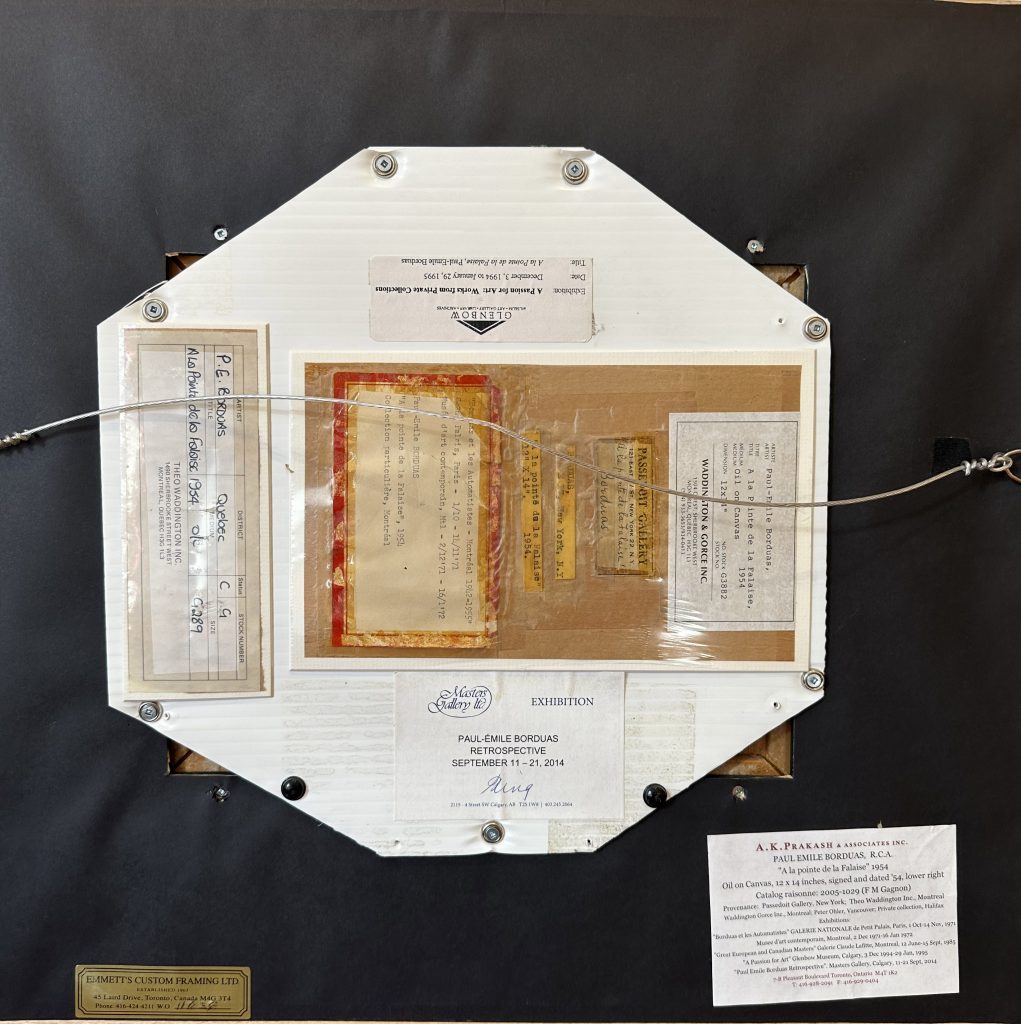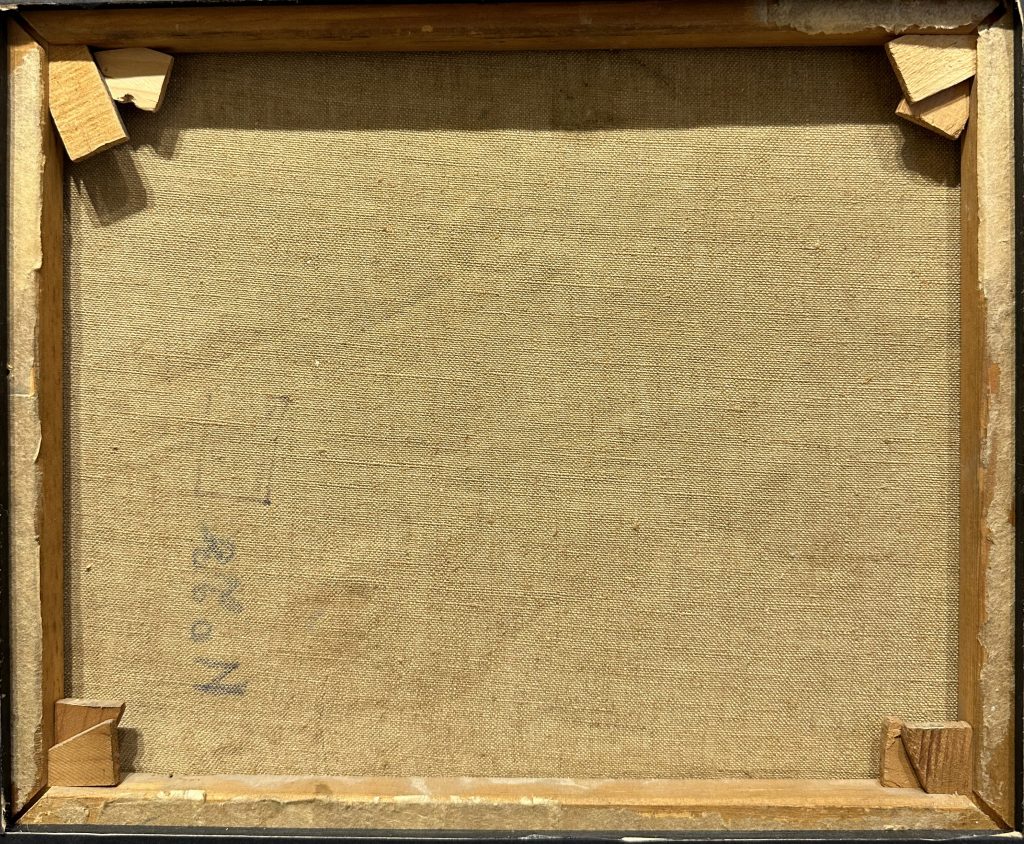Catalogue Raisonne no. 2005-1029
Provenance
Passedoit Gallery, New York
Theo Waddington Inc., London, England
Waddington & Gorce Inc., Toronto
Masters Gallery, Calgary
Private collection, Toronto
Literature:
GAGNON, François-Marc, “An exhibition to see and see again”, Le Devoir (Montreal), December 18,
1971, p. 13.
GAGNON, François-Marc. Paul-Émile Borduas (1905 – 1960). Critical biography and analysis of the work, Fides, Montreal, 1978, p. 342 n.1, 345, 528.
GAGNON, François-Marc, Paul-Émile Borduas. A Critical Biography, McGill-Queen’s University, Montreal & Kingston, 2013, p. 327.
TEYSSÈDRE, Bernard, Fernand DUMONT, and Laurier LACROIX, Borduas and the automatists. Montreal, 1942-1955, exhibition catalog, Quebec, Ministry of Cultural Affairs of Quebec, 1971, mentioned p. 89,
no. 41.
Exhibited:
1971-1972 Borduas and the automatists. Montreal – 1942-1955, Paris, National Galleries, Grand Palais, October 1 – November 14, 1971; Montreal, Montreal Museum of Contemporary Art, December 2, 1971 – January 16, 1972, p. 89, no. 41.
Great Europeans and Canadian Masters and Artists of the Gallery, Montreal, Galerie Claude Lafitte, June – September, no. 24.
1995 A Passion for Art: Works from Private Collection, Glenbow Museum, Calgary, Alberta, December 2, 1994 – January 29, 1995
2014 Paul-Emile Borduas Retrospective, Masters Gallery, Calgary, Alberta, September 11-21, 2014
From 1953 to 1955, Borduas resided in New York, a place the artist found less constricting than Québec. Borduas’ art underwent a significant transformation as he immersed himself in the American abstract expressionist movement, attending their exhibitions and meeting notable artists like Franz Kline. Borduas’ work from this period, following the aftermath of the publication of Refus Global, reveals a shift away from Automatism to a more personal form of Abstract Expressionism. The distinction between object and ground becomes blurred, and a central focal point disappears in favour of a flattened, ‘all–over’ pictorial surface. Art historian François–Marc Gagnon remarks on the developments during these important years of Borduas’ career, writing that ‘the objects’ in his Automatiste paintings become fragmented spots, or marks, applied with a palette knife, and tend to spread across the entire picture surface. By replacing the brush with the knife to paint the ground, he gives the work a new solidity, and above all, he brings the objects closer to the pictorial surface.
The fusion of object and ground is imminent. This new direction is visible in Borduas’ oil painting A la pointe de la falaise, where the figure/ground distinction has been eliminated, with only larger palette knife strokes in the centre layered above smaller strokes around the edges of the canvas. The multicoloured “automatic” brushstrokes blend into one another to form an intertwined, web–like image, rather than his previous work of distinct shapes detached from a clear background. Borduas would then proceed into further experimentation of this new method in New York only a year later, inspired by Jackson Pollock’s ‘drip’ technique.
While Borduas’ initial exhibition in New York occurred at the Gisèle Passedoit Gallery, Martha Jackson eventually became the exclusive representative of his work in the city.
